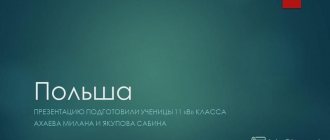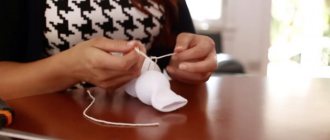STAGES OF WORK ON THE ARTISTIC COMPONENT OF A MUSICAL WORK
The creation of a musical image as an integral hierarchical system in artistic perception and reflection of aesthetic information is the goal of the performing process at any stage of training and the main method of professional work on a musical work [2]. Constantly improving performance criteria, a student musician necessarily recreates a musical image at various stages of his performing activity. This phenomenon begins with decoding the musical notation of the text and identifying its semantic components. Traditionally, in music pedagogy, this is the first stage of work on a musical work, which involves correlating the syntactics of a musical note and its semantics with the performing symbol-intonation. Musical intonation is an information unit for the performing reading of a musical text [3]. Expressive pronunciation of two or more sounds, intonation relationships within a phrase, sentences of an instrumental-information complex (melody, harmony, pedal, agogics, etc.) are the controlling parameters in working with a musical image. The difficulties of the first stage are determined by a number of reasons: 1) differences in the levels of general and musical culture, professional training of students, the diversity of their aesthetic tastes and preferences; 2) as a consequence, the need for a multivariate approach to the presentation of educational information, the selection of educational texts (musical repertoire) and the organization of their perception (methods of teaching and education), taking into account the factor of different speed of assimilation. At this stage, it is important to teach the student to work independently with the text. The algorithm for such work should be individual and develop in the process of creative communication and cooperation with the teacher, taking into account the psychophysiological principles of pedagogy related to monitoring the quality of attention, the ability to concentrate and the organization of work time [1]. The second stage is associated with technical well-being or the perceptual aspect of performing activity. It involves identifying and consolidating leading motor stereotypes [4], ensuring maximum ease of performance with the most expressive implementation of elements of musical texture. The difficulties of this stage are obvious for a number of reasons: 1) a correctly chosen movement pattern is not always convenient and comfortable from the point of view of human physiology; 2) the natural desire to be safe provokes intramuscular tension, fear, and uncertainty in one’s abilities in the student; 3) the mental nature of the movement requires individual “adjustment” of the student’s performing apparatus by introducing additional control parameters. Additional control parameters provide systemic, stabilized control of the motor implementation of musical tissue, which harmoniously corresponds to the internal plasticity of the work, what in music pedagogy is characterized by the concept of ideomotor. The development of a student’s ideomotor skills will occur successfully if: 1) the peculiarities of perception and the speed of assimilation of information about game actions associated with ideomotor concepts are taken into account; 2) students are stimulated to search for technical solutions to an artistic problem. In the process of searching for the desired sound, the student inevitably uses the previously developed fund of motor-technical skills, abilities, and ideas. This means that he must choose from the available “expressive techniques” with the help of which it would be possible to objectify the performing intentions. In instrumental training, the “alphabet” of instrumental movements, standard and playing formulas are especially relevant for students: chord, melody structure, figurations, tremolo, arpeggio, etc. Performance based on precise ideomotor representations creates the conditions for correct mastery of the alphabet of game formulas. Insufficient mastery of ideomotor skills is expressed in an irrational form of movements, which prevents the achievement of the required speed, temporal and spatial accuracy, endurance, sound quality, etc. It would be appropriate to mention some of the most common teaching methods that help to find the necessary motor sensations while playing music. These, of course, include pedagogical demonstration or “illustration” as an alternative solution to a technical problem. Also relevant is the method of extrapolating motor sensations from one sensory sphere to another, for example, into the sphere of plastic breathing or ornamental representation of a gesture (“breathing hand”, “circular” movement of the hand, etc.). Well-chosen analogies of tactile sensations (“the palm is wide and warm”, “feeling” the keyboard, “plasticine” fingertips, etc.), conventional from the point of view of the physiology of movement, performing techniques (“combining” the work of the hand) will help to expand the scope of the student’s performing sensory with a shoulder girdle), going beyond traditional ideas about space and time (imagine the keyboard of an instrument further or lower than its actual location, launching a mechanism for expanding the internal sense of time and vice versa). Motor sensations can also have a psychophysiological nature, genre and style contexts. The introduction of really non-existent parameters into the performing process has a suggestive (auxiliary) effect on the student, forcing him to acquire new gaming skills, as well as correct the ones already formed. The main thing in working on the repertoire in its motor-technical part is working on the “emotional characteristics of the movement.” Characteristic properties can be defined as the expressive context of the game action. Work on the characteristics of movement makes a positive contribution to the formation of artistic emotions, and all motor-technical work, as a stage of work on a musical work, receives the status of a form of musical performing activity. The development of a student's performing technique on specially selected musical material is achievable in two cases: 1) if the peculiarities of perception and assimilation of information about game actions associated with ideomotor ideas are taken into account; 2) if the student’s search for technical solutions is stimulated in the process of ideomotor training. In the process of searching for the desired sound, the student uses the previously developed fund of motor-technical skills, abilities, and ideas. This means that from the available motor-technical fund such “expressive techniques” must be selected with the help of which it would be possible to objectify performing intentions. The third stage of work on a musical work synthesizes the tasks of the previous two, leading to the last link in performing activity - the creation of a musical performing image. The nonlinearity of the interaction of all three stages, their organic nesting within each other, is most convincingly manifested here. The musical image sensually perceived by the performer at the first stage of the work acquires the logical structure of its expression at the second, and again returns to its sensual essence at the final stage of its formation, when logic, having retreated to the periphery of the performer’s consciousness, only “pointwise” exercises control over the sensual musical continuum, the events of which are born and go into the depths of the human subconscious. We can say that the controlling parameter and main task of the third stage is to find an adequate relationship between the artistically intuitive component of the performing process and the knowledge-logical component inherent in the structure of the musical text: in the musical genre, style, form, canons of perception and performance of the musical work. The student interprets (recreates) the sound image, that is, he independently creatively rethinks it. As a result, performance mobilizes almost all forms of musical and mental actions. The intellectual operations of a performing musician have a pronounced emotional connotation, which inevitably activates emotional thinking, forming the emotional-volitional sphere, a culture of experience. Emotional experience and motivation, which provides the necessary vector for self-development, are one of the main forces that ensure the successful implementation of the tasks of the third stage of work on a piece of music. An important point at this stage is the problem of emotional attitude [5]. This is the ability to achieve emotional resonance with a work of art, which is not an easy task. The psychological mechanism of the attitudinal determinant is one of the most complex in the structure of the activity of a teacher of an art discipline. The ability to form a stable predisposition in a student to a certain form of response requires significant intellectual, emotional and volitional efforts, and a lot of time. Resonant impact occurs when the internal characteristics of the environment coincide with the characteristic of the impact [6]. Considering the student as a subject of learning, having his own internal characteristics (character, level of education, level of culture, age, etc.), the teacher can achieve resonance (performing response) only at the “frequencies” characteristic of the internal characteristics of the student. It is always very difficult to evaluate the results of the last stage, namely, the level of performer’s interpretive reconstruction of a musical image. Technical diagnostics, which include the level of training, a musical thesaurus, developmental psychology and specialization, make it possible to monitor musical training, but not the level of artistic development of the student. Identifying “personal resonances” requires a different kind of diagnosis. This is always an approximate and intuitive adaptation to the cultural and historical type of thinking and the author’s worldview proposed in the work. In the triune educational situation “student-work-teacher”, the teacher is a “compelling force”, but not a coercive one. The closer the “resonances of an object (work) are to the “internal resonances” of the subject himself, the less necessary the influence of the “compelling force” is. The influence of the teacher should be minimized, as in any self-organizing system. Thus, this work examines three stages of working on a musical work from the point of view of the formation of performance symbols, motor stereotypes and adequate musical images for students under the soft coercive influence of the teacher. REFERENCES 1. Lazarev M.A. Technology of creative development of students of pedagogical universities based on the formation of artistic culture//Humanitarian space. International almanac. - 2012. - T. 1. - No. 3. - P. 523-532. 2. Murtazina L.E. Hierarchy of perception of a musical message from the point of view of the information approach // Bulletin of the Kazan State University of Culture and Arts. - 2012. - No. 3-2. – P.23-25. 3. Medushevsky V.V. Duality of musical form and perception of music // Musical psychology. M.: MGK, 1992. P. 84–91. 4. Pavlov I.P. Full collection Proceedings M.; L.: Publishing House of the USSR Academy of Sciences, 1951. T.3. P. 244. 5. Uznadze D.N. General psychology / Transl. from Georgian E. Sh. Chomakhidze; Ed. I. V. Imedadze. — M.: Meaning; St. Petersburg: Peter, 2004. 413 p. 6. Razumny V.A. Artistic pedagogy. M.: Iprikt, magazine “Russian wealth”, 1999. 74 p.
Working on an artistic image at Children's Music School
A student’s understanding of the content of a musical work (especially in the first years of his education) is facilitated by the specificity, clarity and definiteness of artistic images - qualities that are more inherent in program music. That is why program artistic pieces are able to attract a young musician to the task of revealing musical content and arouse the student’s interest in solving this most important task for performance. The imagery of the young student’s perception of the content is greatly facilitated by the program title of the play, which immediately orients him in the nature of the music. For example, “Song”, “March”, “It’s Raining”, “Dance”, “Sad Song”, “Hunting”.
Often, in imitation of nature, composers create something purely visual and programmatic, for example, reproducing the singing of birds, the whistle of the wind or the babbling of a brook. When performing such works one has to solve a relatively easy problem. The performance scheme here is already predetermined; the musician will only have to color it according to the template. Much more beautiful, more inspired is that music that strives not by direct imitation, but by reflection in general outlines and timbres to express any mood or image of nature, either directly emphasizing the author’s intention in the title of the piece, or leaving it vague and dependent on the value of the work itself. .
For people gifted with creative imagination, all music is at the same time programmatic and does not need any program, because it fully expresses all its content in its own language.
2.2. The main stages of working on a work
Music notations of works are only schematic episodes of the author's thoughts. Translating such a recording into real sound is the most difficult and crucial moment facing the performer. Significant, but far from sufficient, hints of this are made by the authors in the notes in the form of dynamic signs, designations of strokes, tempos... These valuable data should be treated with attention and thoughtfulness. Careful study of the musical text and careful treatment of it is, of course, the first and necessary condition for successful work on a musical composition. But this does not yet guarantee truly artistic performance.
The performer is faced with the task of penetrating into the very essence of music, understanding its ideological and emotional content and form, determining the nature of the means of expression and performing techniques, and showing the connection, opposition and correlation of semantic constructions. It is necessary to establish tempos, the nature of the rhythm, shades, sound features, dynamics and timbres, the nature of strokes, fingering and other means of expression and playing techniques. Their application can be infinitely diverse, but the goal should be one - the creation of a single artistic whole. This must be an artistic plan for the performance of the work, which represents one holistic mental structure, all the details of which are subordinated to one idea - how the musician plans to express the essence of the work.



